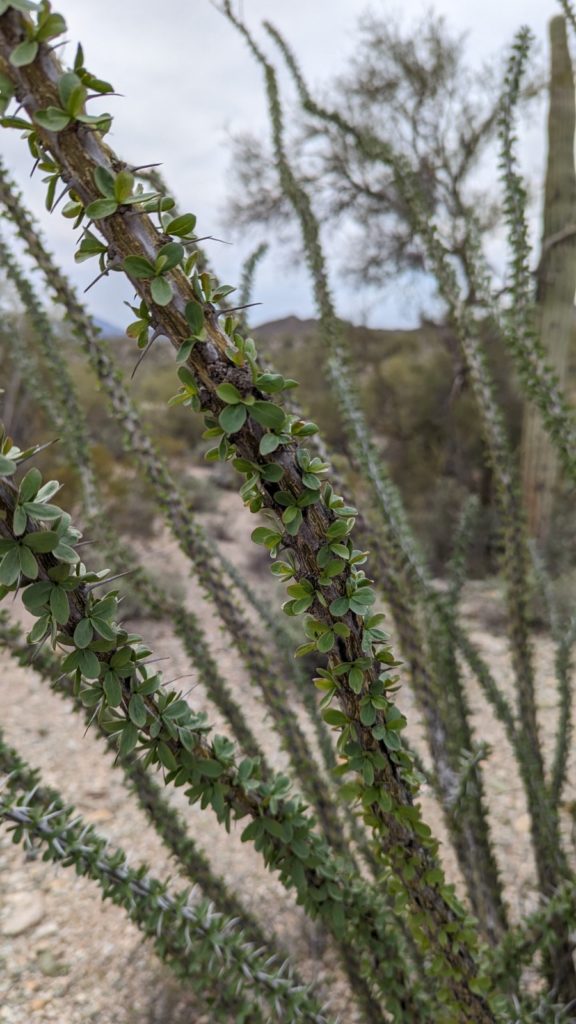The Sonoran Desert is known as “the Green Desert” and if you look at the photo above, I think you will agree with us that the name is appropriate! On one of our hikes while here, we both repeatedly commented that we didn’t realize a desert could be so diverse and, yes, so green! Learning about the plants that inhabit this space has been fascinating. We will try not to bore you too many details because we understand that this is information that is probably more interesting first hand, but humor us as we share a few facts about some of our favorite desert plants!


Heather’s favorite is the octotillo. Most of the time, the ocotillo just looks like a bunch of spiny sticks coming out of the ground, but after a rain, it grows beautiful dark green leaves. We were lucky enough to be here after a rain, so we got to see them in all their glory! The inhabitants of the area often use it to make living fences by cutting and planting the branches into the ground which then root and continue to live!

The teddy bear cholla are called this because they look soft and cuddly, but are actually covered with millions of spines ready to attach themselves to you to hitch a ride. They reproduce by detaching their joints (segments of the actual plant) which then root into the ground. Finding a ride on an animal or unwilling human is how they spread throughout the area. Jeff learned first-hand how easily the joints of the cholla will detach from the plant and attach to your skin. He was lightly touching one to see how sharp the spines were when it attached itself to his hand and tried to come along for a ride. They say a hair comb is the best way to get them off, but since we didn’t have one handy, we pried it off with a knife instead.

The palo verde tree is interesting because it is entirely green, but does not have leaves! Leaves would cause the tree to lose too much moisture, so it photosynthesizes through its green trunk!

The saguaro is the tallest and largest cactus in the U.S. and they can live to be up to 200 years old. Even the giants of the desert need a little help, though. Their seeds are spread by birds, who eat them and then drop them again under trees and bushes (often creosote or palo verde trees) that they perch on. Then, the seeds take root under that tree or bush which serves as a nurse plant for the young saguaro, sheltering it and protecting it from the sun. As the saguaro grows bigger, it needs more and more water, often utilizing so much that the nurse plant no longer gets enough and dies.

And, of course, the star of the show here is the organ pipe cactus. These cacti usually grow farther south, and Organ Pipe Cactus National Monument is at the extreme northern end of their range. These guys crave the sun’s heat, so they don’t require nurse plants and they typically grow on south facing slopes to maximize the heat they receive each day from the sun.

Organ Pipe Cactus National Monument was another hidden gem that we knew nothing about until we were looking for our next stop and stumbled across it on the map. We have always been huge fans of the National Parks, but are quickly coming to realize that the National Monuments often have just as much to offer without the crowds. Had we known there was so much to see and do here we would have allowed more time, but now it is time to move on and see what the next stop has to offer!
See more from Organ Pipe Cactus National Monument in the video below.
Until next time!

